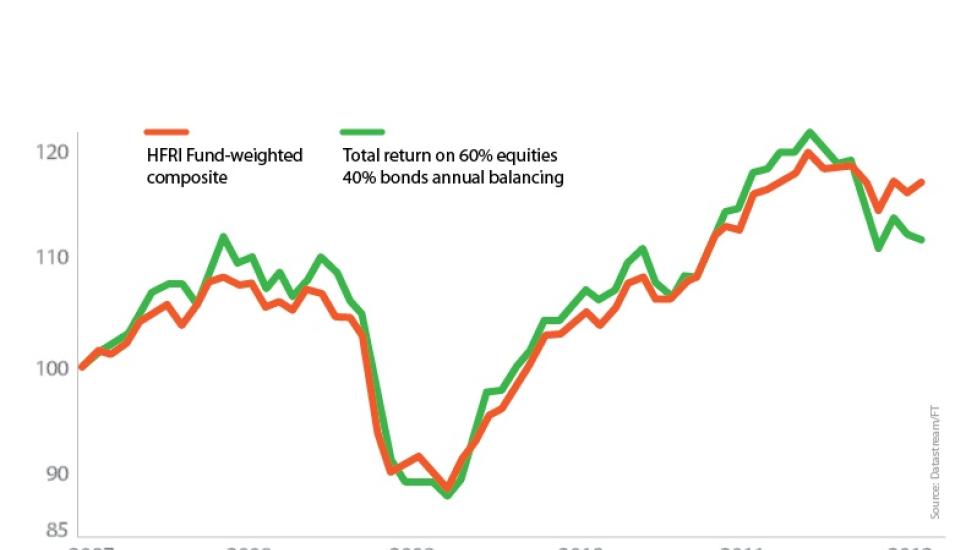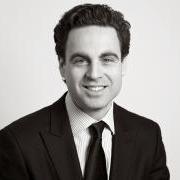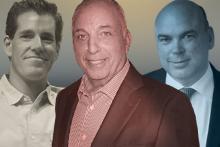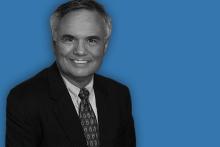Unhedged

Mention hedge funds to an investment specialist at a family office three years ago and the response was more than likely to have contained a few expletives. That’s because for many very wealthy investors who had been early converts to the hedge fund investment phenomenon, the period from the collapse of Lehman Brothers in late 2008 to at least the end of 2009 represented the worst ever experience they had ever had with hedge funds since their inception.
Punitive redemption restrictions, collapse of investment performance and the realisation of just how high the so-called two-and-20% fee structures were affecting investment return angered a great sway of investors across the globe. Investors also didn’t like the often huge volatility in returns, so well exemplified by the flagship fund run by one of Wall Street’s best known managers John Paulson. His Advantage Plus Fund fell around 50% in 2011 after rising 17% in 2010, according to people familiar with the numbers. Many also asked whether investing in a traditional portfolio of 60% equities and 40% bonds, as the chart above illustrates, wouldn’t be a better long term investment opportunity – and a much cheaper one.
Hardly surprising then that the anger was turned into direct action and many wealthy investors dramatically cut their portfolio allocation to hedge funds. Just how much was revealed by Campden Research’s annual European family office study, which showed family offices cutting their allocations down to an average of just 3% of portfolios in 2009, from 8% in 2008.
That said, some hedge funds continued to perform strongly during this period, or at least for some of the period, making their investors – many of which were family offices – big returns. In Europe, these strong performing funds included London-based Winton Capital Management and Geneva-based Brevan Howard Asset Management, and in the US Kenneth Griffin’s Citadel Fund.
As the financial crisis began to subside, a more measured view of the sector began to emerge. Memories in the world of investing can often be short. Hedge funds, often seen as one of the most arrogant parts of the financial services sector, also began to listen to their critics – no doubt helped by the large redemptions affecting most funds. In many cases fees were cut and lock-up periods reduced.
Ron Albahary, chief investment officer of Threshold Group – a family office headquartered in Gig Harbor, Washington, that extended its services to families beyond its founding Russell family in 2003 – says the main reason so many investors were disappointed with the sector was because their expectations were not managed well. It was this misalignment that caused many to move out of hedge funds.
“If they had better understood the fund strategies, they might have stayed invested,” says Albahary. “Also, certain groups of investors did not appreciate hedge funds putting up gates or setting up illiquid special purpose vehicles. Hedge fund exposure is most suited to those clients who are extremely comfortable with the risk of illiquidity and understand that their investment is primarily designed to be a risk mitigator rather than aggressively targeting above market returns.”
A sense of perspective about hedge fund investing looked to be returning last year. And money began to flow in again. According to Chicago-based Hedge Fund Research, the first-half launch total of new hedge funds in 2011 was the strongest six months since the first half of 2007, as the hedge fund industry capital reached a record level of $2.04 trillion (€1.55 trillion), with high net worth investors and family offices once again at the fore in investing.
Now that the mantra of absolute returns has been supplanted and at a time of low interest rates and high volatility, hedge funds seem to have rediscovered their real vocation – reducing risk, adding portfolio diversification and providing relative or uncorrelated returns.
“Family offices are looking to allocate to external hedge funds, but only on a case-by-case basis and they are very picky on strategies and costs,” says Julian Sinclair, chief investment officer at Talisman Global Asset Management, the London-based investment management arm of the Pears family, which opened to external professional investors in 2011. “We are not chasing performance but exceptional strategies that offer a good, solid return over the market cycle, as well as protecting our downside.”
This shift in sentiment is borne out by a survey of single and multi family offices with an average asset size of $2.2 billion published in September by Infovest21. It found that almost two-thirds of respondents viewed hedge funds “very favourably” against only 4% that viewed them negatively and that, on average, family offices allocated about 26% of their portfolio to hedge funds, spread across 23 managers.
 “We’ve always been relatively overweight in hedge funds because they provide diversification within a portfolio. An allocation of 15% to 20% of a client’s portfolio would not be unreasonable,” says Khaled Said, managing partner at Capital Generation Partners, a London-based private investment office catering to families, trusts and endowments. “Ultimately, diversification is a ‘free lunch’ – a portfolio with more strategies promotes a similar return with lower volatility because hedge funds supply diversity in terms of both strategy and manager.”
“We’ve always been relatively overweight in hedge funds because they provide diversification within a portfolio. An allocation of 15% to 20% of a client’s portfolio would not be unreasonable,” says Khaled Said, managing partner at Capital Generation Partners, a London-based private investment office catering to families, trusts and endowments. “Ultimately, diversification is a ‘free lunch’ – a portfolio with more strategies promotes a similar return with lower volatility because hedge funds supply diversity in terms of both strategy and manager.”
He added: “It is a question of how best to navigate through volatile times. Many conventional asset managers do not have sufficient tools because they are required to either buy highly market-correlated stocks or hold cash to meet investment criteria. Giving smart managers the freedom to invest in an unrestrained way is usually better than the straitjacketed approach of the traditional asset managers.”
But hedge funds still challenge the comfort zones of entrepreneurs who are attempting the transition to disciplined managers of wealth. Jonathan Kempner, president of Tiger21, a US-based peer-to-peer learning group for ultra-high net worth investors, says: “While many of our members continue to have an interest in looking at hedge funds – and a recent survey of Tiger21 members has shown an uptick in money flowing towards hedge funds – from an asset allocation perspective, our members are still gravitating towards a ‘sleep well versus eat well’ investment philosophy. This means that they are raising cash, doing more direct private equity investing in operating companies and income-producing commercial real estate.”
Tiger21 found that although hedge funds were the second most popular mentioned investment, after equities, the aggregate asset allocation to hedge funds of a typical member’s portfolio was 12%, lower than cash, fixed income, equities or real estate.
The standards set for hedge fund selection have certainly grown more exacting. In addition to issues of performance, transparency and liquidity, the credit crunch also exposed the counterparty risk of hedge funds in respect of their banking, administration and custodial relationships, not to mention the dependability of co-investors.
“We have a very high threshold in terms of our hedge fund selection because, generally speaking, they are not tax-efficient, charge high fees and can be very illiquid,” says Albahary. “We keep a direct list of hedge funds that exceed our thresholds. In this respect a fund’s reputation rather than its performance is the most important aspect. It must have a culture of transparency, strong ethics and a commitment to compliance and operational due diligence.”
Capital Generation Partners saw more than 300 asset managers last year and rarely says no to a first meeting. But it rarely says yes to a second meeting and has only added four funds to its buy list in that time. “We generally like managers who have strong views and who have a large portion of their own money in the fund on the same terms as clients, so that they only make money when the client makes money,” says Said. “We look as closely at their individual track record as that of the fund because you are effectively investing in that person. They must be well incentivised and capable and we take time to examine the structure and the co-investors, because co-investor risk is now of paramount importance.”
Nor is it just a question of getting close, but of staying close. “We like managers who understand that compounding wealth is the way to get rich and stay rich,” says Talisman’s Sinclair. “Because we are counterparties to a number of investment banks in our own right, we know the managers, who they speak to and can keep a close eye on them. This summer, for instance, when a number of managers had blow-ups, we knew which ones stayed on holiday and which ones came back to the office.”
This desire for propinquity does not favour fund of funds. “We think like owners and we want to know our managers well,” says Said. “If you are outsourcing your investment management to fund of funds, you can’t do that because there is another layer of management. We have concentrated portfolios with no more than 12 to 15 managers in any asset class. Most fund of funds are more diversified than that.”
The fund of funds’ structure also entails another layer of fees and, with alpha getting smaller, fees are very sensitive. Infovest21 found the average fee structure paid to a hedge fund was a 1.6% management fee and an 18.9% incentive fee. The average management fee and incentive fee for funds of funds was 1% and 7.8% respectively. But for Threshold Group, the primary factor is quality. “Finding high quality fund of funds managers is a big challenge,” says Albahary, “because there is a lot of mediocrity out there and very few players have distinguished themselves recently; with that said, fund of funds can offer a solution for our smaller clients.”
Although the array of different hedge fund strategies may seem bewildering, family offices can focus on the skills that complement their in-house expertise and current exposures. “If we come across a strategy that we cannot replicate internally, such as statistical arbitrage, then that might be of interest,” says Sinclair. “Or, if we are aggressively long in equities, we might look at some bearish short-selling managers. We also look at some of the macro funds, but they need to display real differentiation if they are to provide a useful counterweight in a portfolio.”
Albahary believes a diverse assortment of strategies – long-short, global macro and multi-strategy – all have a place in the full investment toolkit. “We especially like the multi-strategy managers because they have the nimbleness to reallocate risk capital to new opportunities,” he says.
“While event-driven funds, especially in the distressed space, often have good access to undervalued assets and the managers themselves can play an important role in driving value realisation. The starting point for including any strategy in a portfolio is the decision-making process and, whenever possible, I tend to lean towards the elegance of simplicity,” says Albahary.
“The question is not whether we need hedge funds in a portfolio, but where can we find an investment solution that will act as a diversifying risk mitigator and has the liquidity and transparency demanded by our clients? Does it have the risk return profile that we are looking for to help weather turbulent markets?”






